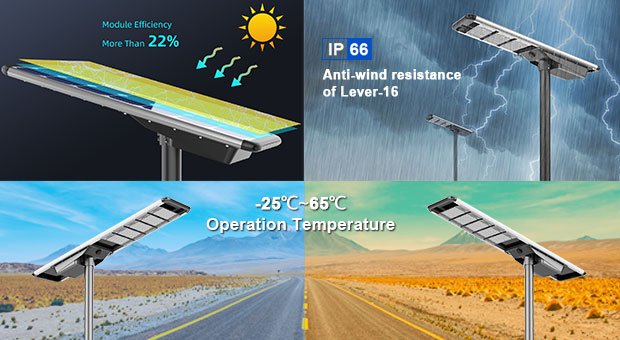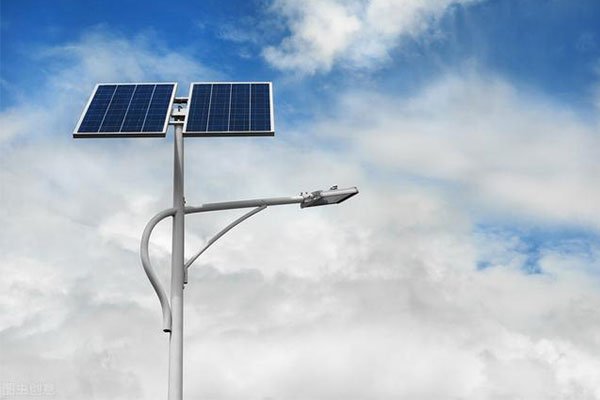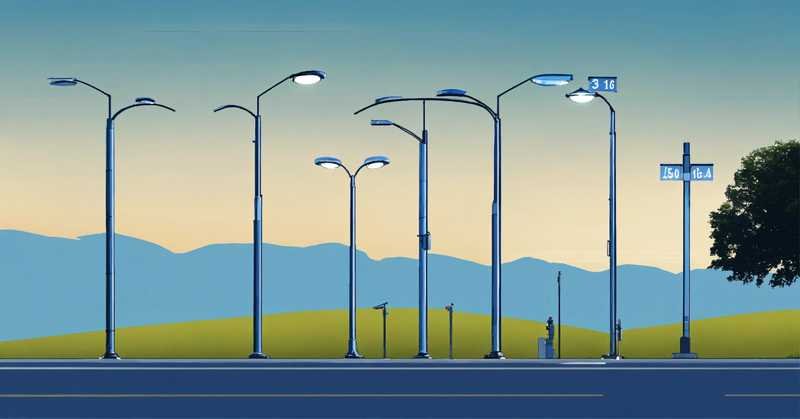Cities and businesses are increasingly adopting sustainable solutions to reduce energy consumption and environmental impact. Street lighting is a major energy expense, but advancements in solar technology offer a cost-effective alternative.
All-in-one solar streetlights integrate solar panels, batteries, LED lights, and controllers into a single unit, providing a smart and sustainable lighting solution. Their easy installation, energy efficiency, and durability make them ideal for municipalities and businesses looking for greener alternatives.
This guide explores the components, benefits, and long-term impact of all-in-one solar streetlights.
What Are All-in-One Solar Streetlights?
All-in-one solar streetlights combine four essential components—solar panels, batteries, LEDs, and controllers—into a single, compact unit.
Unlike traditional streetlights, which rely on external power sources and complex wiring, these lights are completely self-sustaining, using solar energy to operate independently.
The Four Main Components of All-in-One Solar Streetlights
1. The Solar Panel
The solar panel is responsible for collecting sunlight and converting it into electrical energy. The quality of the panel directly affects the system’s efficiency and performance.

Key Features:
- Energy Collection: The panel absorbs sunlight during the day and converts it into electricity.
- Storage for Night Use: Excess energy is stored in the battery to provide illumination at night.
- Monocrystalline Panels: These are preferred due to their high efficiency, durability, and superior performance in low-light conditions.
2. The Battery
The battery stores energy collected by the solar panel and supplies power to the LED light during nighttime operation. Battery reliability is crucial for uninterrupted lighting.

Battery Types:
| Battery Type | Pros | Cons |
|---|---|---|
| Lithium-Ion | High efficiency, long lifespan, lightweight | Higher upfront cost |
| Gel Battery | Stable, good for moderate climates, cost-effective | Shorter lifespan compared to lithium |
| Lead-Acid | Low initial cost | Heavy, short lifespan, poor efficiency |
Why Lithium-Ion Batteries Are Preferred:
- Longer lifespan (5+ years) compared to lead-acid and gel batteries.
- Better energy efficiency and faster charging cycles.
- Lower maintenance and higher reliability.
3. The Light Source (LEDs)
LEDs are the preferred light source for solar streetlights due to their energy efficiency, longevity, and brightness.

Advantages of LED Streetlights:
- Low Power Consumption: Uses up to 80% less energy compared to traditional halogen or sodium lamps.
- Extended Lifespan: Can last up to 50,000 hours, reducing replacement costs.
- Brighter and Safer Illumination: Provides high-lumen output for better road visibility and security.
4. The Solar Controller
The solar controller manages the entire system, ensuring proper energy distribution, battery protection, and automated functionality.

Functions of the Solar Controller:
- Dusk-to-Dawn Operation: Automatically turns the light on at night and off at sunrise.
- Motion Sensor Technology: Adjusts brightness levels based on movement to conserve energy.
- Battery Protection: Prevents overcharging and deep discharging, enhancing battery longevity.
Why Cities Should Choose All-in-One Solar Streetlights
1. Easy Installation
Traditional streetlights require underground wiring, trenching, and external power sources, making installation complex and costly. In contrast, all-in-one solar streetlights require minimal setup.
Installation Benefits:
- No external wiring needed, reducing installation time.
- Lower labor costs due to simplified installation.
- Ideal for remote areas where grid access is limited.
2. Lower Energy Consumption
Solar-powered LED streetlights significantly reduce energy costs compared to conventional high-pressure sodium or halide lights.
Energy Savings Comparison:
| Lighting Type | Power Consumption | Energy Source |
|---|---|---|
| Metal Halide | 250-400W per unit | Grid electricity |
| Traditional LED Streetlight | 100-150W per unit | Grid electricity |
| All-in-One Solar Streetlight | 30-80W per unit | Solar energy |
Key Takeaways:
- Up to 80% reduction in energy consumption compared to traditional lighting.
- Automated energy-saving features reduce unnecessary power usage.
- No dependency on the power grid, making it cost-effective for municipalities.
3. Durability in Harsh Weather Conditions
Unlike traditional lights, which may fail due to extreme weather, all-in-one solar streetlights are built to withstand various environmental conditions.
Weatherproof Features:
- Compact Design: Integrated components reduce the risk of damage.
- Waterproof & Dustproof: IP65-rated enclosures protect against rain and dirt.
- Wind & Heat Resistance: Durable frames withstand high winds and extreme temperatures.
The Environmental and Economic Impact

Sustainability Benefits
- Reduces carbon footprint by eliminating reliance on fossil-fuel-generated electricity.
- Supports green initiatives for eco-conscious cities and businesses.
- Minimizes light pollution with controlled brightness settings.
Long-Term Cost Savings
- Zero electricity costs after installation.
- Minimal maintenance expenses compared to grid-powered lighting.
- Extended lifespan of components reduces the need for frequent replacements.
Attracting Eco-Conscious Businesses & Residents
- Enhances city reputation by promoting sustainability.
- Encourages investment in green infrastructure and smart city solutions.
- Demonstrates commitment to environmental responsibility.
Conclusion: The Future of Sustainable Lighting

All-in-one solar streetlights offer a smart, efficient, and sustainable alternative to traditional lighting. Their easy installation, lower energy costs, and durability make them the preferred choice for city municipalities and businesses.
Why Invest in All-in-One Solar Streetlights?
✔ Reduce installation and operational costs
✔ Improve road safety with high-quality LED lighting
✔ Enhance sustainability efforts and lower carbon footprint
✔ Ensure reliable lighting even in off-grid locations
With rising energy costs and increasing environmental concerns, investing in solar-powered streetlights is not just an option—it’s the future of urban and rural lighting.
Now is the time for cities to adopt smarter, more energy-efficient lighting solutions!







